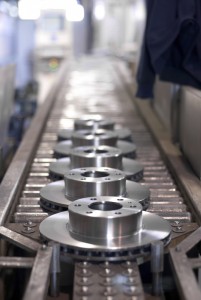 We have a long-term client that manufactures custom products for their customers. One of those customers contributes over 80% of the company’s annual revenues, a situation that has been in place for years. We call that “concentration,” a condition that is usually seen as a serious business risk, because losing such a customer can make huge dent in revenues and thus profits, perhaps even causing the failure of the business. Add to that a condition that all those products are made to the design requirements of the customer, who also own the designs and the exclusive right to decide who can use those products.
We have a long-term client that manufactures custom products for their customers. One of those customers contributes over 80% of the company’s annual revenues, a situation that has been in place for years. We call that “concentration,” a condition that is usually seen as a serious business risk, because losing such a customer can make huge dent in revenues and thus profits, perhaps even causing the failure of the business. Add to that a condition that all those products are made to the design requirements of the customer, who also own the designs and the exclusive right to decide who can use those products.
How can you possibly look at such a business as anything but a disaster waiting to happen? How can that be a positive attribute of this company if, for example, the owner wanted to sell it and retire? Technology evolving as it is today, so much manufacturing production is now done in Asia at much lower cost, and access to alternative suppliers for most everything is easier today than ever before. Our client’s (former) CPA told them over 20 years ago that they should sell it and run, because everything was ultimately going to be made in China.
So how come they’re still around? How come they’ve experienced some of the most profitable years in the history of the company over those same 20 years? How is it that their huge customer hasn’t gone away for any of the reasons outlined above? The answer lies in managing that concentration and managing the relationship. Here’s how this company is doing it:
Is this the kind of company you would try to build from the start. Not likely. But if you have one, or inherit one, perhaps there is real lemonade that can come from your lemon(s). You build on your strengths, fix your weaknesses, and tout your company as a success story whose revenue is amazingly predictable and predictably profitable. Any buyers out there?
© 2024 CFO For Rent - Western Management Associates. All rights reserved. Website by Avodah Web Solutions.